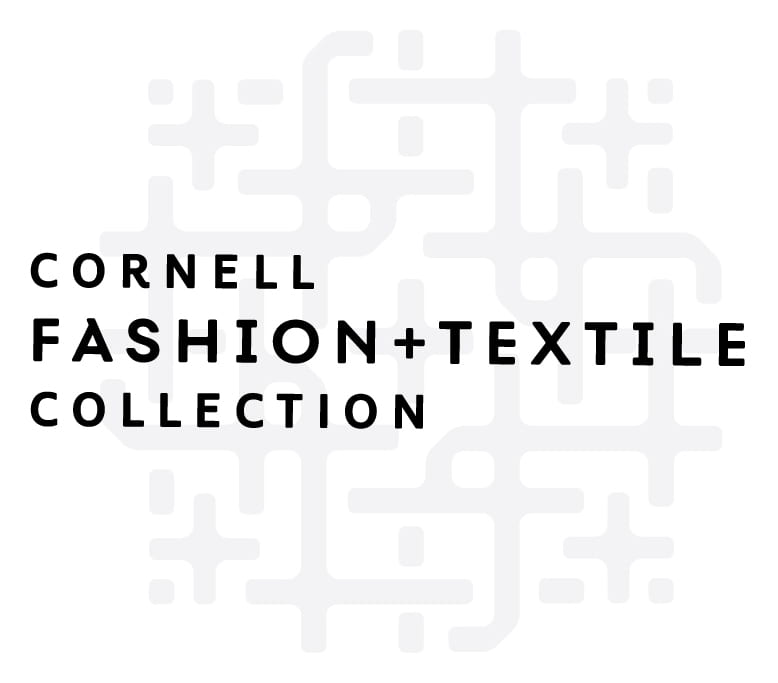This online blog post features materials protected by the Fair Use guidelines of Section 107 of the US Copyright Act. All rights reserved to the copyright owners.
Blog post by Cleah Dyer
The artifact I found most intriguing during our tours to different libraries and historical / rare collections on campus were the Plauen Lace Factory books. To interpret and contextualize the lace books, I came up with four research questions:
- What is Plauen Lace
- What are Plauen Factory Lace Books?
- What is its history of Plauen Lace and the Plauen Factory Lace Books?
- What is the cultural significance of Plauen lace and where do we see its relevance in fashion today?
What Is Lace?
To understand the significance of Plauen lace and answer the questions above, we must start at a more basic level, asking the question of what is lace itself?
In an Article titled Learn About Lace: Discover the History of Lace With a Guide to the Many Different Types of Lace, the authors define lace as “a delicate fabric made from yarn or thread, characterized by open designs and patterns created through a variety of different methods” (“Learn about Lace,” 2021). The article later goes on to explain that “lace is a decorative fabric used to accent and embellish clothing and home decor items. Lace is traditionally considered a luxury textile, as it takes a lot of time and expertise to make” (“Learn about Lace,” 2021).
In terms of Plauen Lace, its origins are rooted in Germany dating back almost 120 years. As explained in an article from the SpitzenStadt Plauen, in 1880, tulle was introduced to the world of embroidery and later became the foundation for Plauen lace (“Plauen Lace,” n.d.). After the invention of the embroidery machine, chemical lace was on the rise. In terms of the actual design techniques and manufacturing of Plauen lace. The article also states, “It is a lace where the stitching area is stitched with embroidery threads that form a continuous motif. Afterwards, the stitching areas are removed and only the embroidery remains. The stitching base is made of a chemically soluble material” (“Plauen Lace,” n.d.).
Design Elements in Lace
When considering the design elements and principle of the lace, in figure 1, sample #16229 exhibits one of the few examples where the element of point to draw one’s eye to the dot-like pattern, which are actually flowers. On the other hand, a commonly used principle is proportion. Also in figure 1, proportion is used in sample #16227 to define and outline the circular center of the flower as there is a heavier and more elevated use of thread in that area as opposed to the surrounding petals, vines, and leaves. Proportion is also seen in figure 2 sample #16305, but is instead used to convey design rather than definition. The design consists of large circular swirls with much smaller ones resting on its edge. This evokes somewhat of a form of optical mixing; when looked at far away enough it looks like one shape but they are actually individual swirls close to the bigger ones.
In terms of the lace books itself, they are identified by Cornell Mann Library as “Plauen Factory Lace Sample Books.” Figures 1 and 2 show pages of the large, oversized books containing rows of lace believed to have been designed and manufactured in Plauen Lace factories in the 1910s. According to the information provided during our visit to Mann Library, these books were used as a selling and marketing tactic, and also to keep a log of previous patterns and techniques of the place including “the accession number, lot number, stitch, thread, and material information”. It is important to recognize that this artifact of fashion history is a fashion history book itself, and a rare one at that. Although Plauen Lace was granted the Gran Prix at the World Exhibition in Paris, Plauen lace’s peak soon faced a decline in its success. The information provided during the Mann Library tour included insights on the high unemployment rate of the embroidery industry between 1912-1913. Furthermore, with the infrastructural casualties caused by WWII, most copies and embroidery machines were destroyed. Therefore the four books housed in Mann Library are assumed to be some of the last of their kind.
The styles of plauen lace in general are culturally significant, not just in the way that it honors its designers, embroiderers and German heritage, but it helps keep the Art Deco design era alive in modern fashion. As seen in figure 1, many designs resemble that of flowers and vines, evoking a type of naturalistic caricature. These can also be seen with modern day uses of lace such as in wedding dresses. As seen in figure 3, similar design elements using the design to represent flowers and foliage are used in this wedding dress from the 2019 Mary’s Designer Bridal Boutique collection. In fact, I would argue that current fashion students may find their way back to these lace books when researching art deco influences of fashion for wedding dresses, shoe designs, or other common garments that have high potential of being re-designed.
References
Bureau of Manufactures , United States. Machine-Made Lace Industry in Europe: Calais, Plauen, St. Gall, Nottingham. Govt. Print. Off., 1905.
“Plauen Lace.” Stadt Plauen, https://www.plauen.de/Tourism/Plauen-Lace/?La=2
The Plauen Factory Lace Sample Books, Mann Library Special Collective, Oversize TS1782 .P531 1910
“Learn about Lace: Discover the History of Lace with a Guide to the Many Different Types of Lace.” MasterClass.com, MasterClass, 12 Aug. 2021, https://www.masterclass.com/articles/learn-about-lace-discover-the-history-of-lace



